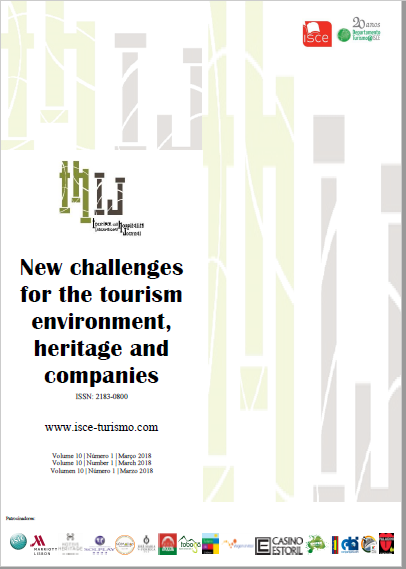Património cultural no Vale do Alva: Grande Rota do Alva
DOI:
https://doi.org/10.57883/thij10(1)2018.30496Palabras clave:
Sostenibilidad, Desarrollo turístico, Productos turísticos, Turismo de naturaleza, Recursos culturales, SenderismoResumen
El interés por interpretar el valor del patrimonio para el turismo y el ocio es la principal motivación para investigar los recursos asociados a la región del río Alva. Se ha constatado la existencia de importantes recursos patrimoniales, correspondientes a su antigua ocupación humana. Este río se encuentra en la vertiente suroeste de la sierra más alta de Portugal continental, en el Parque Natural de la Serra da Estrela, que se extiende desde el municipio de Seia hasta Penacova. Este trabajo reconoce que el turismo cultural debe ser complementario al turismo de naturaleza como productos ancla para el desarrollo regional, especialmente por el potencial de las rutas de senderismo y también por el interés de varias otras actividades asociadas al río. Es necesario partir de un inventario riguroso de los recursos para conocer su potencial, paso imprescindible para definir el potencial de los productos turísticos. Esta metodología se basa en el trabajo de campo para poder determinar el potencial de este destino turístico y desarrollar la imagen de esta región, que se propone denominar Alvaland a efectos de promoción internacional. Es importante agregar la oferta turística de los municipios de este territorio, concretamente con el establecimiento de la Gran Ruta de Alva (GRA), un proyecto que se desarrolla en colaboración entre los municipios. La metodología de campo se basa en el diagnóstico de las rutas peatonales existentes y el análisis de su viabilidad para contribuir a una mejor integración de estas rutas, con el objetivo de ser un vector económico subregional. Este inventario y la estrategia de agregación pueden contribuir al desarrollo de la peatonalidad, asociando recursos naturales y culturales.
Citas
Augusto, D. D., Pinho, J. C., & Rodrigues, C. J. (2010). Análise integrada multissectorial e pluridimensional no território. Revista Turismo e Desenvolvimento, 13/14(2), 499-511.
Cunha, L., & Abrantes, A. (2013). Introdução ao turismo (5ª Edição). Lisboa: Lidel.
Leitão, M. L. (2004). Análise do mercado turístico do Parque Natural da Serra da Estrela: Estudo de segmentação e implicações para o planeamento de marketing de áreas-destino (Dissertação de Mestrado em Gestão e Desenvolvimento em Turismo, Universidade de Aveiro).
PEDTS (2005). Plano estratégico de desenvolvimento do turismo no concelho do Seixal. Seixal: Universidade de Aveiro e Gabinete de Turismo da Câmara Municipal do Seixal.
Queirós, A. S., Veloso, A. S., & Ferreira, H. D. (2008). Património natural e cultural da Serra da Estrela: Roteiro Serra da Estrela. Liga de Amigos de Conimbriga, s. l.
Queirós, A. S. (2014). Turismo cultural e economia do património. Revista Turismo e Desenvolvimento, 21/22(4), 107-117.
Salgado, M. A. B., Martins, J. A., & Ramos, E. M. C. V. (2015). Desenvolvimento de “novos” produtos turísticos no vale do Alva: Turismo industrial. Inovação, gestão e educação em turismo e hotelaria: Investigação aplicada. Coleção Politécnico da Guarda, 13, 83-91.
Tavares, A. O. (2012). Rotas e percursos da Serra da Estrela – Planalto superior. Seia: CISE.
Descargas
Publicado
Cómo citar
Número
Sección
Licencia
Derechos de autor 2018 This work is licensed under a Creative Commons - Attribution 4.0 International (CC BY 4.0)

Esta obra está bajo una licencia internacional Creative Commons Atribución 4.0.
Este trabalho encontra-se publicado com a Licença Internacional Creative Commons Atribuição 4.0.






